Why and how to write a brand promise, with 12 examples.

For an entire decade as a designer and brand marketer, I always wondered why a symbol like the Nike Swoosh or the Starbucks mermaid logo could be so much more valuable than the graphic itself. How can the simple presence of a symbol affect our actions?
The reason brands affect our behavior is not their logo; it’s what their logo promises. If we see a Swoosh on a pair of shorts, then they are more likely to be of high quality and make you feel like an athlete. If you see the Starbucks logo on a building, then you know there is rich, fresh coffee in there and a pleasant environment to sit it in.
It’s a complete abstraction in our minds. A logo is just a graphic unless and until there is a meaningful promise behind it: a brand promise.
A brand promise is one or two sentences, which internally communicates what the customer expects from all products and services under a brand. It aligns people’s efforts and keeps the company from developing something that is out of scope for the brand.
A company needs a brand promise to communicate customer expectations to all people in the organization so that the organization creates consistent experiences for customers.
Left to chance, people within an organization can do wildly different things with the brand. Brands would not mean anything is one person in one division is selling magazines under a brand while another is selling yogurt under the same brand. (That is a real-life example I covered in BMB’s brand extensions article.)
In this article, I explain what a brand promise is. I give you a step by step recipe on how to write out the brand promise for your organization. We review twelve examples of famous brand promises. I also differentiate explain why a brand promise is different than a tag line or value proposition.
Definition of a brand promise.
A brand promise in a line that defines the scope of a brand in terms of product category, quality, price level, and values.
A brand and a promise go hand in hand; you do not have a brand unless that brand promises a type of product and a level of service that customers can expect.
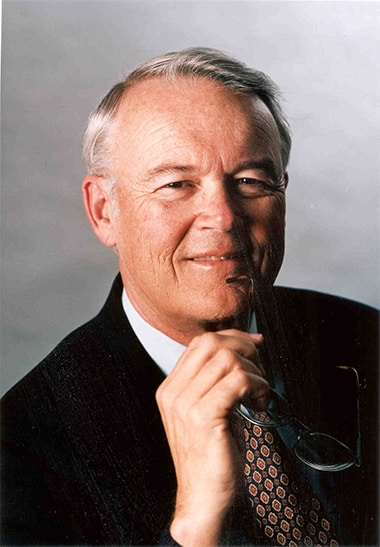
“Far more than a name and logo,” says David Aaker at the beginning of his book: Aaker on Branding, “[a brand] is an organization’s promise to a customer to deliver what the brand stands for not only in terms of functional benefits but also emotional, self-expressive, and social benefits.”
Customers are going to come to expect a particular product, quality, and price from a brand, and they are going to be disappointed if they do not get what they expect.
For example, when I go to Starbucks, I expect a rich coffee or espresso beverage, a pleasant environment to spend some time, and friendly baristas. I also expect to pay $3-8 on a coffee. If I wanted anything different, I would go to another coffee shop with a different brand promise.
A brand promise statement is simply the customer expectation codified in a one or two line sentence. For new brands, the brand promise is the expectation they would like to create in future customer’s minds. For established brands, this is a statement of fact about what the customer is expecting.
The brand promise should place the product within the scales of category, quality, and price level, as well as organizational values if applicable.
- Product Category: the type of product or service provided (e.g., Patagonia = outdoor apparel)
- Quality: the expected level of quality, or the product qualities customers expect (e.g., Patagonia = “build the best product”)
- Price: the part of the market your company occupies (Patagonia = enthusiasts, i.e., high end)
- Values: any organizational values which are an essential purchase consideration for customers (Patagonia = “use business to protect nature”)
The brand promise usually lives within an organization’s documentation, such as a brand book. An organization should communicate the brand promise to anyone who will be doing work to further the brand; this includes all employees as well as external partners such as freelancers, service providers, and retailers.
Brand Promise vs. Tag Line / Slogan
A brand promise is not a public statement.
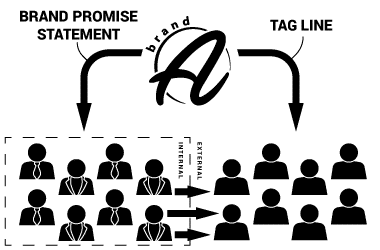
Companies use tag lines or slogans to frame a brand’s offerings or inject something exciting and noteworthy. A tag line is, by definition, a public statement that appears to the customer as many times as possible.
The brand promise is not a public statement, and it should not be communicated to the customer. It’s not some deep, dark secret; it would be fine if it got out into the public consciousness. It is just not designed for public consumption. It is only to align people’s efforts within the organization.
A tag-line might take copywriters and brand managers months and over a thousand iterations to be tight enough to speak to consumers in only a few words. You do not need to go to all that effort with a brand promise.
A brand promise is talking to employees, investors, and partners. These people have already bought into the brand; they need to know what to do to further it. A line designed for these people is going to be worded entirely differently than a tag-line.
Brand Promise vs. Value Proposition
A value proposition is on a shorter time horizon than a brand promise.
A brand promise and a value proposition are similar. Both are one or a few lines on why a consumer would choose the brand over its competition. But a value proposition focuses on product features, where a brand promise speaks to the long term meaning of a brand. Features may change, but the promise endures.
A value proposition is a useful exercise to go through. Look at your brand’s offerings versus other brands consumers might choose. What are the product features that make your brand the clear choice? Does the market value these features? Are these features strategically defensible? In other words, what is stopping the competition from adopting these features if the product is successful?
The value proposition should be a stepping stone on the road to the brand promise. If Volvo’s brand promise is to provide a safe car suitable to protect the driver’s loved ones, then the safety features of any given vehicle are going to be necessary to establish the brand promise credibly. The value proposition that established Volvo’s reputation of safety was the three-point seatbelt. The seatbelt that is now standard in every car was first offered in the Volvo PV 544 in 1959. Nowadays, Volvo needs to be first to provide features like lane keep assist and collision avoidance to protect their legacy of safety.
Why do you need a brand promise? Why is a brand promise important?
A brand promise statement is vital to have so your brand can become known for something over time.
If a company has a brand promise statement, then everyone within an organization can agree on what the brand represents and can align their efforts to build the brand. With the brand promise defined, leaders and employees can look for opportunities to further the brand’s reputation and execute on them quickly.
The brand promise exists in the customer’s mind whether leaders at a company define it or not; most businesses operate without defining the brand promise and run the risk of disappointing the customer because the customers, staff, and executives all have a different idea of what is to be expected from the brand. New brands can fail to grow, and established brands can get diluted, lowering their value.
Successful brands are very clear about what they plan to do for each and every customer. They write a brand promise statement. This statement becomes the standard that the staff seeks to deliver, and customers come to expect.
Brands are not built by exceeding expectations, surprisingly enough. They are formed by clearly setting a brand promise, and meeting it for the customer 99.9% of the time. Think of the biggest brands. Are they the best products in the world? Not necessarily, but they are very consistent in the service they deliver. A Big Mac always tastes the same, on six continents, twenty-four hours a day.
If the brand promise cannot be met, then the product or service should not be marketed under the brand as-is.
Many companies have great ideas for products and services that are outside their brand’s scope and get into trouble when they develop and offer them under their current brand. Innovators offer the new product or service to customers, and they get confused them because it is not congruent with their understanding of the brand.
Pursuing innovation is excellent, but you have to ask the question: “is this a great idea for our brand?” If not, you may still want to pursue the idea, but under a sub-brand or another brand entirely.
Brand Promises and Sub Brands
Sub Brands like Toyota Prius and Walmart Neighborhood Market modify expectations.
Changes in the business environment, market, or innovations can force companies to alter their offering drastically. But your brand has already promised a level of service, so how do you manage customer expectations? You have three choices.
One choice is to start a new brand if the product is so different that it warrants it. If the Coca-Cola Company launches a new mango flavored drink, they don’t call it “Coke Mango.” They would give the drink its own unique brand that is appropriate to the product and can build its own brand promise in time.
The second choice is just to run the new service under the old brand; this is called a ‘pivot’ in business circles. But, without a significant advertising and public relations campaign, you are going to disappoint people who come to the brand expecting the old service.
The third choice is to launch a sub-brand. Marketers use a sub-brand to modify the customer’s expectations.
Famous examples of sub-brands include the Toyota Prius, Samsung Galaxy, Coke Zero, and Microsoft Xbox. We go into these examples and more in our article: 17 Examples of Successful Sub Brands. My favorite example is Lenovo Legion because they uses the concept of a sub-brand so strategically.
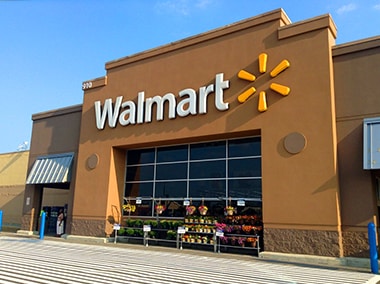
For example, when you think of Walmart, then you would expect a large store with pretty much everything you would need to buy for day-to-day living. A Walmart is typically 100,000 sq.ft. and offers 120,000 different products.
But Walmart saw competition from convenience and dollar stores; people are opting to buy their frequently purchased items from small local stores instead of doing big shops at Walmart. So the company reacted by opening smaller stores with fewer items.
But how can they do that? Wouldn’t a small store defy the brand promise?
Yes, so they called their smaller stores Walmart Neighborhood Market. These stores are typically 1/4 to 1/2 the size of the regular stores and carry 1/3rd the number of products.
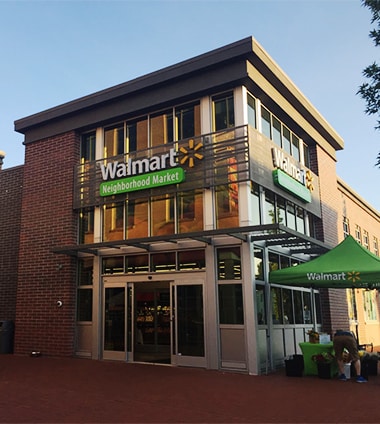
Seeing the Walmart Neighborhood Market label on a small building changes the shopper’s expectation of what is inside. The customer can expect a selection of fresh food, packaged goods, and everyday essentials. They know they are not going to find motor oil, furnace filters, or the extended offerings; they would have to seek out a Walmart or Walmart Supercenter to find those items.
How do you write a brand promise?
What You Do For Whom: place your brand in the marketplace.
Do you have a brand that’s rolling and you want to write your brand promise? That’s great. Most companies start rolling and find a nugget of success; they start doing something that speaks to customers, and their brand starts growing. Smart leaders and brand marketers try to deduce and distill what is working. This recipe for a brand promise is for you.
Are you trying to craft a brand promise for an un-launched venture? Great. Thinking about it early in the life of the organization will focus you and your colleagues. Use the exercise below, and sub the consumer research for the existing brand for the brands in the marketplace you are entering. If it is a new product category, think about other categories that people turn to solve the same problem in their lives.
Step 1: Understand how customers see your existing brand.
You need to talk to your customers. You probably talk to them all the time about their problems and their business. It may be personally challenging, but it is entirely appropriate to ask them about how they see your brand.
Ask questions like:
- Why do you turn to us instead of going somewhere else?
- How do you see our brand? I would love your perspective.
- When you think of , what comes to mind?
Talking one on one to customers will help you empathize with their perspective, meaning that you will be able to see how your brand appears to them. Direct communication with customers can be invaluable for the leader of an organization.
Talking in person is ideal. Video calls are okay, but not as useful. Note that you take as much information in from their facial expressions and body language as their words. Email and text messages are better than nothing but will not give you the full experience.
There is no substitute for talking to customers. Surveys and feedback forms are great tools to understand the customer’s view of the company in aggregate. But they often attract a subset of extraordinarily pleased or agitated customers, thus skewing the data.
Step 2: Place your brand in the market on these four dimensions.
Your brand does not exist in a vacuum; you have competitors and live in a market. Even if you have a new and innovative product, customers are solving the same problem in other ways.
In the course of doing step one, your customers will invariably compare you to competitors. You may wince, but it is excellent information. Now you have to take the information and place your brand in the market.
Product Category: Define the category of products you are competing in. If your brand spans multiple categories, then define the problem you are solving for people.
Quality: Define the level of quality people expect from the brand. Be honest. Everyone want’s to say “the highest quality” but not every brand is the Rolls Royce of the market.
Price: Define where your brand sits in the market. Choose one: lowest cost, budget, mid-range, premium, or high end.
Values: Define any organizational values that are important for the customer when they chose you. Most corporate values are essential for employees and candidates to hear, but mean nothing to a customer, but some can attract customers, such as environmentalism, product durability, excellence in customers, or evangelizing a lifestyle.
If you want to see how a lifestyle can define a market, then read about how we planned out how to place our project brand, Nordeau, square into the mountain sports lifestyle.
Step 3: Define your customers.
What group of people do you serve? What words would you use to categorize them?
Your brand does not serve everyone on the planet. If a brand is to be meaningful, it chooses a subset of people and meets their specific needs very well.
Starbucks serves coffee aficionados. Blizzard serves gamers. IBM serves organizations. BMB serves entrepreneurs, marketing professionals, and designers.
Step 4: String these together in a sentence.
Start by just place all the phrases you came up with in this formula.
-Your brand– serves -customer category– by providing -quality level– -product category– at -price level- to -company values-.
For example:
- Patagonia serves outdoor adventurers by providing the best-made apparel at premium prices to protect the environment.
- Tesla serves drivers by providing high-quality electric vehicles at all price levels to reduce the world’s dependence on fossil fuels.
- Pokemon serves kids and the young-at-heart by providing family-friendly entertainment and toys for all income levels that features our pocket monsters.
You or your copywriter can rework this base sentence into a statement that is more elegant or catchy. But you know the content it needs to communicate to your team to keep them on brand and mission.
12 Examples of Brand Promises
See how large brands write their brand promises.
Below is a selection of the brand promises from large brands. Usually, the brand promise is taken from the company’s mission statement or corporate values.
Take note that these are necessarily the best or most useful statements in the world. The size and bureaucracy of large companies make it challenging to craft a statement that encompasses the real brand promise: the one that lives in the customer’s mind.
Examples of brand promises for consumer brands:
Disney
“The Walt Disney Company is to entertain, inform and inspire people around the globe through the power of unparalleled storytelling, reflecting the iconic brands, creative minds and innovative technologies that make ours the world’s premier entertainment company.”
Coca-Cola
“Our central promise at The Coca-Cola Company is to refresh the world in mind, body, and spirit, and inspire moments of optimism; to create value and make a difference.”
McDonald’s
“Simple, easy enjoyment.”
“Organize the world’s information and make it universally accessible and useful.”
Amazon
“Earth’s most customer-centric company, where customers can find and discover anything they might want to buy online, and endeavors to offer its customers the lowest possible prices.”
Nike
“To bring inspiration and innovation to every athlete* in the world.
*if you have a body, you are an athlete”
Starbucks
“To inspire and nurture the human spirit—one person, one cup, and one neighborhood at a time.”
Examples of brand promises for B2B companies:
IBM
“Innovation that matters, for our company and for the world.”
Accenture
“Delivering the power of Accenture’s global capabilities and experience to address complex social issues.”
Salesforce
“Tools to help you find, win and keep customers.”
Cisco
“Cisco helps seize the opportunities of tomorrow by proving that amazing things can happen when you connect the unconnected.”
ZoomInfo
“Provide a constant reminder for those who go to market that wherever they are, they are never alone and their next customer is within reach.”
Conclusion. You need to think about what you would like your brand to promise to people.
Whether you take the time to define and communicate your brand promise statement to your team, you have to acknowledge that your brand carries a promise in the minds of its customers.
The more people trust in the brand promise, the more valuable the brand is. So your brand will grow in value and utility if you can make sure your company understands the expectations of customers and meets them every time.
Cover Photo by Adrianna Calvo from Pexels
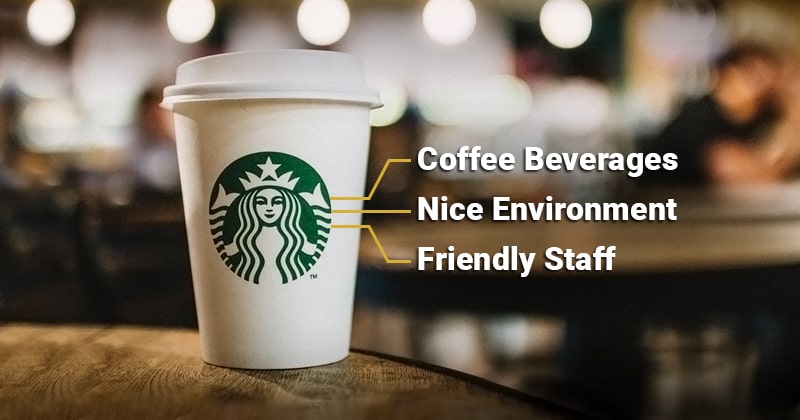
Leave a Reply